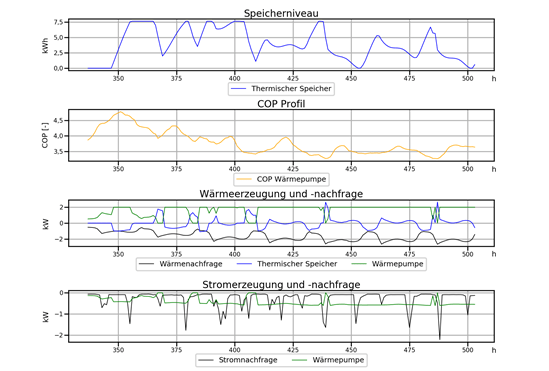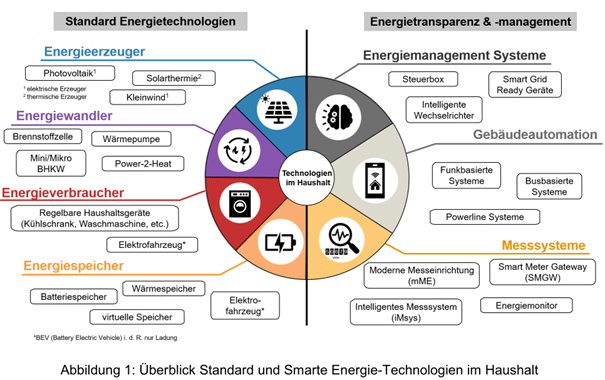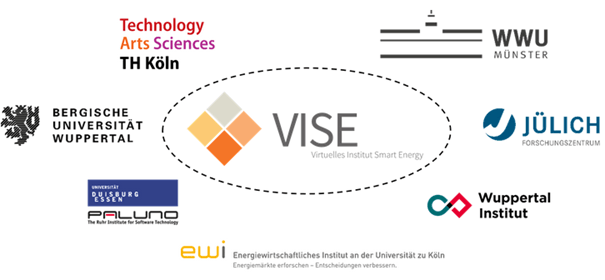
Heat pumps in combination with thermal storage could contribute to a low-cost energy supply, especially in newly built, heavily insulated single-family homes. In this case, households benefit from increased efficiency gains (via the coefficient of performance, or COP) as well as available government subsidies.
This is one key finding from the Institute of Energy Economics (EWI) at the University of Cologne in the research project “Virtual Institute Smart Energy” (VISE). The final report of the sub-project “Smart Technologies for Households”, which has just recently been published, focuses on the conditions under which private households may invest in or use smart technologies. For this purpose, EWI analyzed the optimal investment and operation of a wide range of energy technologies in different households. Using EWI’s COMODO model, Broghan Helgeson, Cordelia Frings and Konstantin Gruber optimized energy investments as well as energy generation and consumption for 32 household types to minimize the total cost of heat and electricity provision.
For small households in older buildings, the least-cost choice may be to invest in an efficient condensing gas boiler. In addition, a small heating rod may be used to cover peaks in heat demand, converting electricity into heat just like an electric kettle. The electricity for these household types is consumed entirely from the grid as their electricity consumption is too low to make a cost-intensive investment in a decentralized power generator profitable.

The situation is different for households that live in older buildings and consume a lot of electricity. For these types, it may be economically worthwhile to generate electricity and heat themselves using, for example, a gas-powered micro-CHP system. Adding a heating rod allows for self-generated electricity to be transformed into heat, which can then be fed into a thermal storage.
A unique aspect of this research project is the fact that the team also studied how non-monetary preferences may influence household’s investment decisions. “In reality, households don’t necessarily choose their heating system solely based on which is cheapest,” says Broghan Helgeson, Research Associate at EWI. “Some households would like to be as self-sufficient as possible, while others are particularly concerned about reducing their CO2 emissions to protect the environment. Yet such non-monetary preferences are not typically represented in many techno-economic models.”
To gain an understanding about the effects these preferences may have on a household’s willing to pay for electricity, space heating and hot water (“empirical willingness to pay”), a survey was conducted by Forschungszentrum Jülich. The results of the survey were then included in the parameterization of EWI’s model COMODO.

“In our model results, these households actually make different choices than households that solely want to reduce their total costs,” Helgeson says. For example, households with a strong preference for self-sufficiency have a substantial willingness to pay for solar thermal, which in turn offsets the high investment costs.
In the multidisciplinary VISE research project “Smart Technologies for Households”, researchers from the Westfälische Wilhelms-Universität Münster, the Technische Hochschule Köln, the Bergische Universität Wuppertal, the Forschungszentrum Jülich, the Wuppertal Institute, the University of Duisburg-Essen and the EWI began conducting joint research in July 2017. The focus was on purchase decisions and usage behavior of households regarding smart products and services under various business models.
